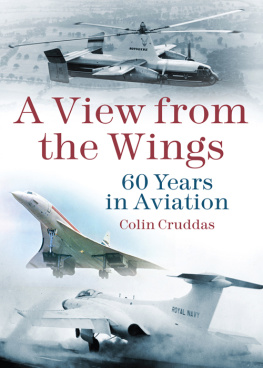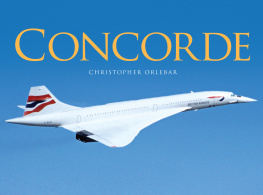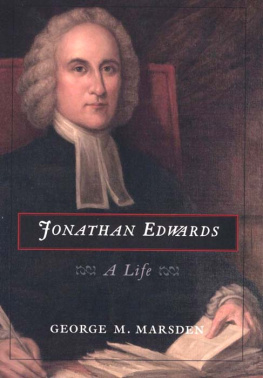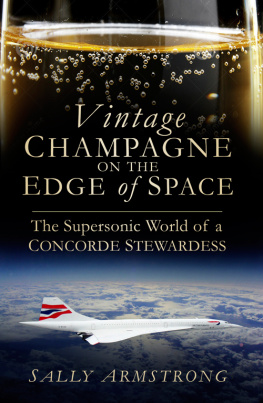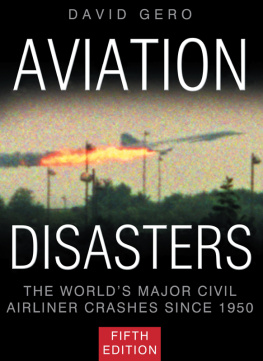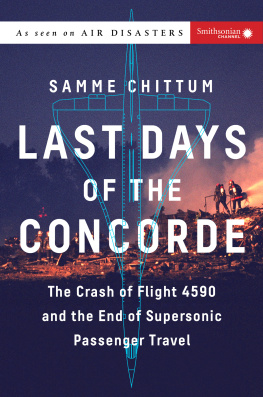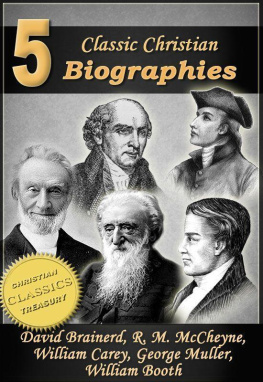FROM
BOUNCING
BOMBS TO
CONCORDE
To my wife Charlotte,
and in memory of my
old friend the aviation
journalist Arthur Reed
FROM
BOUNCING
BOMBS TO
CONCORDE
T HE A UTHORISED B IOGRAPHY
OF A VIATION P IONEER
Sir George
Edwards OM
R OBERT
G ARDNER

First published in 2006
The History Press
The Mill, Brimscombe Port
Stroud, Gloucestershire, G l5 2 QG
www.thehistorypress.co.uk
This ebook edition first published in 2013
All rights reserved
Robert Gardner, 2006, 2013
The right of Robert Gardner to be identified as the Author of this work has been asserted in accordance with the Copyrights, Designs and Patents Act 1988.
This ebook is copyright material and must not be copied, reproduced, transferred, distributed, leased, licensed or publicly performed or used in any way except as specifically permitted in writing by the publishers, as allowed under the terms and conditions under which it was purchased or as strictly permitted by applicable copyright law. Any unauthorised distribution or use of this text may be a direct infringement of the authors and publishers rights, and those responsible may be liable in law accordingly.
EPUB ISBN 978 0 7524 9603 0
Original typesetting by The History Press
Contents
Foreword
by The Rt Hon. Sir John Major, KG CH
Very few people rise from the very bottom to the very top, build up achievements as they go, and leave a beneficial legacy behind them. One such is George Edwards. George Edwards was a rounded man, a man with a hinterland far wider than his genius for engineering. From his boyhood he had a love of cricket and used his knowledge of the game to help Barnes Wallis make the bouncing bomb bounce in the Second World War. The dams of the Ruhr were destroyed by leg spin. George loved painting, a passion that came to him late in life, and was sufficiently good at it to have a canvas accepted for the Summer Exhibition at the Royal Academy at the age of 92. It was an achievement that gave him great satisfaction. We all owe a great deal to George Edwards, though few people will know how much until they read this biography. His life merged with history at key moments in war and peace, and his genius for innovation shaped events in the Second World War and in the general history of aviation. In wartime, apart from helping to destroy the great German dams, he designed an innovative system to detonate enemy magnetic mines to protect our shipping lanes, modified aircraft for special assignments, and was a member of the team that uncovered vital aeronautical information from Germany at the wars end. In peacetime, in his work for Vickers, he led the programme on the TSR.2 supersonic strike aircraft and the BAC One-Eleven jet-liner. He had earlier headed the design teams responsible for the Viking and Viscount airliners and the Valiant, Britains first V-bomber. Later he was instrumental in the development of the most famous airliner of all: the Anglo-French Concorde. I first met Sir George Edwards, OM, designer, inventor and former chairman of BAC, at The Oval. An elderly, modest, undemonstrative man, a flat cap perched on his head, his vowels less precise than his remarkable mind, he sat quietly while watching the cricket. Beside him were two fellow spectators talking of their respective fathers significant contributions to the Second World War. If only they had known... This biography will enable many more to know that George Edwards is part of our nations history; and it is time his story was told.
Acknowledgements
There are many people I wish to thank for their assistance in the preparation of this biography, not least of whom is Sir George Edwards himself, who patiently spent some 30hr with me, describing his life and career. To the Edwards family, especially his daughter, Angela Dingle Jeffreys, who encouraged, supported and managed the project before and after the death of Sir George in 2003; Richard and Clair, his grandchildren; Clairs husband, Gary; his relatives Grant Edwards, who researched his early years, and Uncle George Thurgood, his brother-in law, I extend my heartfelt thanks for their co-operation and generous help.
I am indebted to many colleagues from my old company, the British Aircraft Corporation (BAC) and British Aerospace: Dr Norman Barfield, who was closely associated with Sir George for over fifty years, provided and researched much essential information, as well as proofreading the entire work; John Motum, whose considerable background knowledge and guidance were both illuminating and encouraging; Don McClen, who gave his expert advice on the chapter on Saudi Arabia; Brian Cookson, formerly the company legal director, who cast his eagle eye over the BAC chapters; and Bob Gladwell, who worked for the company in America for many years, and recalled the heady days when Vickers and BAC airliners filled the US skies. Special thanks must also go to Roger Steel, once the company personnel manager and personal art tutor to Sir George, and Mrs Joyce Brixey, his secretary for fifty years.
The recollections of two famous test pilots, G.R. Jock Bryce of Vickers-Armstrongs and BAC, and Capt Eric Winkle Brown of the Royal Aircraft Establishment, have given me much invaluable and enlightening information.
Others from the company or associated with it have also provided me with technical assistance and other help, notably Ron Hedges, keeper of the BAC heritage; film-maker Paul Drew of Communicator Ltd; Peter Gibbon of MGA Ltd; and Barbara Ferguson, formerly of BAC. From the book world I received most helpful guidance from Neil Clayton, Nick Cook and Stephen Chalk. I am extremely grateful to them all.
This biography has been greatly enhanced by several distinguished people who were good enough to give me their time for interviews, and who have provided testimony about George Edwards. I would like to thank sincerely the Rt Hon. Sir John Major, who has written the foreword for the book; Sir Richard Dick Evans, who later succeeded Sir George as chairman of the company, and who contributed the concluding chapter; and the Rt Hon. Tony Benn, who not only gave me the most entertaining interview, but was good enough to research every reference to Sir George from his diaries.
Others were able to recall Sir Georges life outside the aircraft industry. From the cricket world, Sir Alec and Eric Bedser took part in the most amusing three-way conversation with Sir George for my benefit. Bernie Coleman, Derek Newton and Raman Subba Row, from the Surrey County Cricket Club, not only remembered the days when Sir George was president, but their conviviality was much appreciated. To Prof Patrick Dowling, until recently Vice-Chancellor of the University of Surrey, and Duncan Simpson, formerly Hawkers chief test pilot and neighbour, who served St Marthas on the Hill, as did Sir George, I offer my grateful thanks.
Lastly, this book could not have been written without the help of Sir Georges oldest colleague and friend, the late Norman Spud Boorer, whose astonishing memory and vivid description of George Edwards from the earliest days at Vickers has added the essential colour and detail to his story. I only hope I have done it justice.
Robert Gardner
March 2006
Authors Note
As far as possible, the story of George Edwards has been told through the eyes of Sir George himself, whose recall, perceptiveness and wit had not deserted him even in his nineties. It has been compiled through a series of interviews with him, together with interviews with his family, colleagues and others. To convey the immediacy of Sir Georges contribution I have used the present tense, as I have with the other contemporary interviews.








